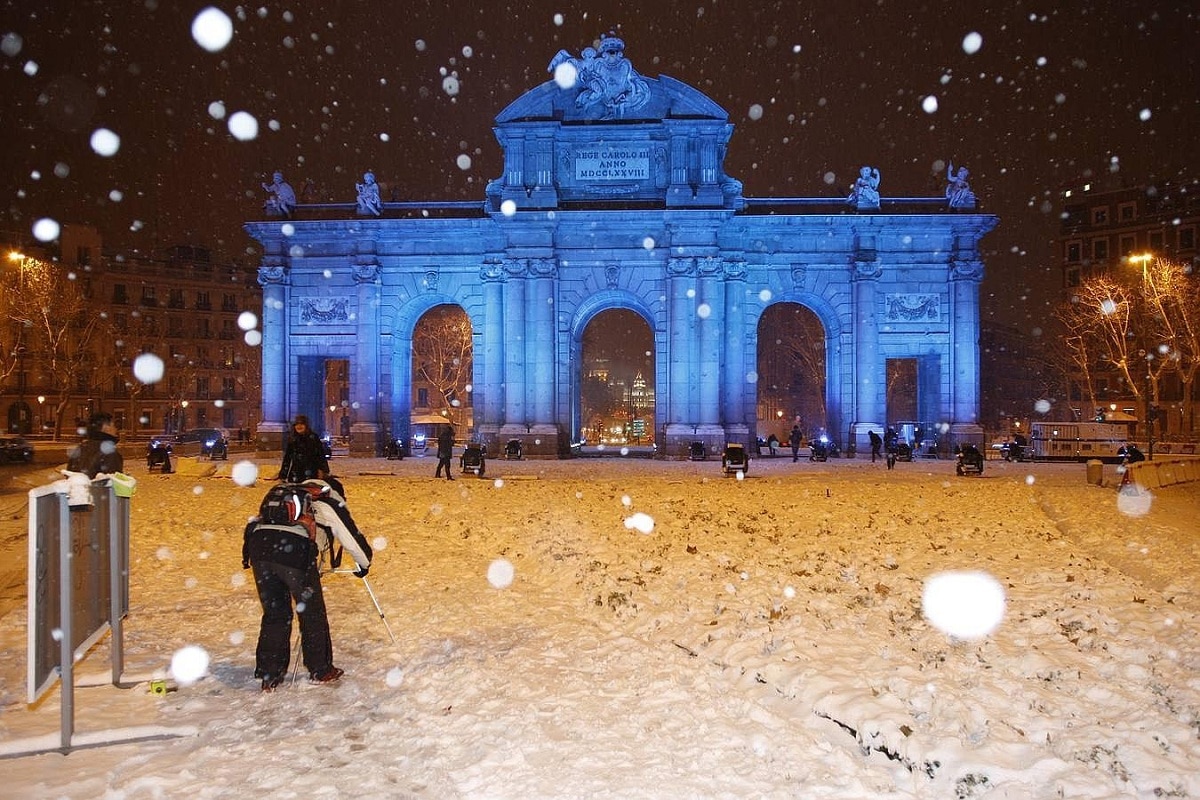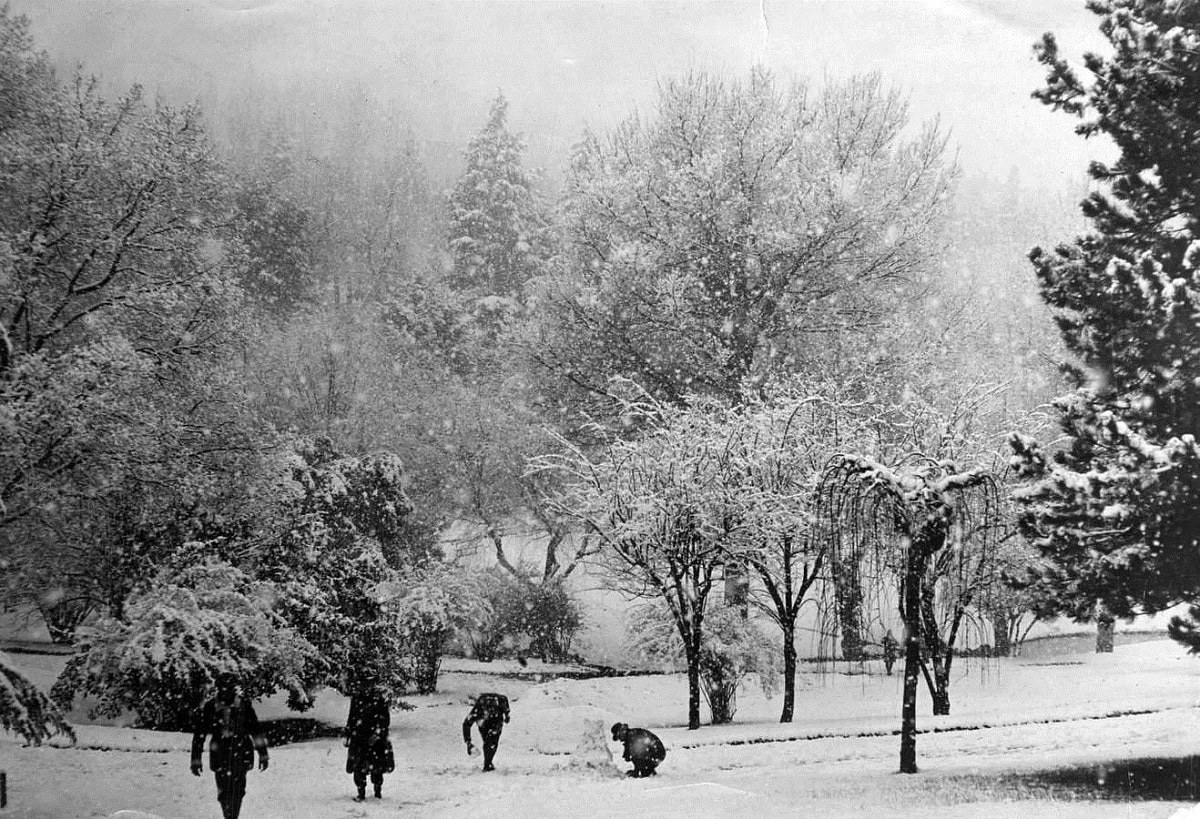
Madrid received 33 liters of snow per square meter in 24 hours according to the National Meteorological Service, which made Filomena the heaviest snowfall since at least 1971. Thicknesses of 40 cm left hundreds of vehicles in the middle of the road and their drivers had to be aided by the UME. In some hospitals, double shifts were implemented because workers could not arrive and others could not leave. However, there are other historical snowfall in Madrid which are also worth telling.
For this reason, we are going to dedicate this article to telling you about the historical snowfalls in Madrid, what their characteristics have been and what consequences they have had.
Historical snowfall in Madrid

1654, 1655 and 1864
The National Meteorological Service (AEMET) highlighted in its ephemeris that on November 21, 1654 there was an "intense snowfall" in Madrid. It would be the prelude to a cold winter, which ended on February 3, 1655, with "half a meter of snow" and "strong cold" in the capital. As for the average rod, they are about 41,8 cm.
The next date marked was December 23, 1864, and the "heavy snowfall" occurred again, an inscription without further information.
1904
It was "something unusual and unique" to collect the AEMET during the snowfall of November 29, 1904, which reached "a thickness of one and a half meters in some parks and avenues."
1950
December 6, 1950 was "the most important, if not the largest, with a significant layer of snow," details AEMET. On the other hand, the experts Jorge González Márquez and Miguel González Márquez report in «Snowfall in Madrid between 1960 and 2005» «The study explained that there was a lot of snow in the afternoon», and the references indicated that the snow was for half a year. meter thick in the streets». They said the information “It is somewhat suspicious, because when looking at the newspapers you could see that the thickness did not reach 10 centimeters. “The snowfall was also accompanied by thunderstorms and strong winds.
1952
On the afternoon of January 26 and the early morning of January 27, Madrid recorded "one of the largest snowfalls known, with a thickness of 30 centimeters."
1957
It also snowed in Madrid on October 2, 1957. In this case, the recorded precipitation is not remarkable, but the "earliest (snowfall) in the capital" highlighted by AEMET. Researchers González and González added in the episode: "Apparently on October 31, 1956 it also snowed, although with less intensity, which highlights the fact that the phenomenon occurred for two consecutive months in October."
On January 19, 1957, a snowfall of 7 to 8 cm of snow also fell throughout the day.
1963

It snowed on February 1, 1963, and again between 3 and 4 in the morning. There are periods of up to 16 cm and subsequent strong frosts. Then "he requested the cooperation of the military to alleviate the situation" due to the lack of means capable of cleaning the snow and ice.
1971
From March 7 to 9, 1971 it snowed non-stop in Madrid. It was "one of the most significant snowfalls known, both in accumulated thickness and, more importantly, in duration, as the snow fell 24 hours a day, beginning in the afternoon of the 7th and continuing until the morning of the 9th. Quoting words of experts. Then 20 to 30 centimeters accumulated, "people skiing in the Parque del Oeste”. In Barajas, on the contrary, "the thickness did not reach 5 cm". Now, AEMET ensures that the current snowfall is the richest since at least 1971.
1977
Regarding the snowfall of December 29, 1977, the researchers of the aforementioned study explained that it reached 22 cm, and the accumulation of snow continued for several days.
1986
The day of April 11, 1986 was not noted for the rain, but for the unusual fact that it snowed so late in the spring.
1984
In 1984, when 15 cm of snow fell in the early hours of February 27 and 28, it seemed that winter was coming to an end without a single snowflake falling in the capital.
1997
On Twelfth Night of January 5, 1997, a "historic snowfall" covered "almost the entire province", with temperatures below zero even in broad daylight. The researchers explained that only 2 cm accumulated in the northern part of the city, but 10 cm in localities such as Fuenlabrada. In other southern towns, such as Valdemoro or Ciempozuelos, the thickness is about 4 cm. It snowed again on day 7, and the capital measured 5 cm.
2005
Closer is the snowfall of February 23, 2005. Madrid has not seen a similar event since 1984, the researchers cite. This time the ground is covered with about 10 cm of snow.
2009
The most recent and richest reference is February 23, 2009, a day more than casual compared to 2005, another day of heavy snowfall in the capital. With a ground cover of up to 15 cm, Barajas airport and much of the road network experienced moments of chaos, with dozens of cars stuck on the A6 overnight. He also had to go to the UME.
Why does it snow less in Madrid?

In the center of the peninsula, there is usually some snow each winter, but over time there can be quite long intervals of snow. In this sense, it usually occurs mainly in the areas surrounding the Sierra de Guadarrama, where soft meteors are more frequent because the altitude factor also comes into play. This is key when marking the dividing line between snowy areas or rainy areas in many cases.
Historical snowfall in the city of Madrid has always come from conditions in the second quadrant (E-SE-S), associated with storms that pass through the southern part of the peninsula and manage to inject very humid air as they move. Therefore, the most suitable snow conditions are those that enter through the front from the southwest, when the rains are usually more abundant. Added to this is the entry of powerful cold air from Central Europe.
In this heavy snowfall, both conditions occurred, as well as the polar depression. In addition, geography also plays an important role. In this case, the altitude. The city of Madrid is located at 667 meters above sea level. Nevertheless, Madrid also had a snow record, and in the north, but not a single heavy snowfall in the Spanish capital.
Under these conditions, the Sierra de Guadarrama blocked the southward advance of the cold air mass. Although these snowfalls are relatively wet and generous, the latter occur mainly in the northern fall of the mountain barrier, sometimes with considerable snow.
I hope that with this information you can learn more about the historic snowfall in Madrid and its consequences.